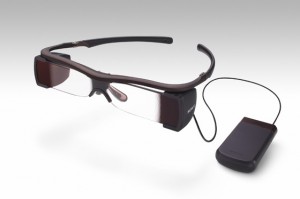At Showeast, the Company Says Virtual-Print-Fee Deals Are Still Available
Sony's F5 and F55 4K camera announcements were music to the ears of the company's digital-cinema division, which is working to get theaters switched over to digital exhibition before virtual-print-free arrangements run dry — and would like to have more 4K movies in the pipeline to drive the company's 4K projectors.
"We have installed something on the order of 13,500 digital cinema projection systems worldwide, including 10,500 in the U.S.," Sony's Senior VP of Digital Cinema Systems Gary Johns told StudioDaily, reckoning that the latter number gives the company a 35 percent share of the U.S. market, where its two largest customers are Regal and AMC. "We want to convince the studios to start creating more 4K content. We get some. Sony Pictures is very supportive, and we have had 4K movies released by most of the major studios. But we would like to see the transition happen more quickly."
Johns hopes Sony's 4K lineup, led by the F65, will help studios shoot and finish movies at 4K, taking full advantage of the resolution available on their screens. A new 4K projector, the SRX-R515 (pictured at the top of this article), is geared toward small-to-medium-sized theaters. It includes user-friendly features like an array of six high-pressure mercury lamps that can be individually replaced — meaning that when one of them dies, the projector has five left to keep it running until the sixth bulb can be individually replaced. Sony is working to get those smaller exhibitors changed over, offering a virtual-print-fee deal with studios for projectors installed in the U.S. by the end of March. "The smaller theaters are important," Johns said. "We're trying to offer solutions to them through our VPF solution especially, but also through other financing."
And, while word has gotten out that Warner plans to show The Hobbit at 48 fps only in a few hundred theaters, Sony says that substantially all of its 4K projectors are software-upgradable, for a charge, to support high-frame-rate projection at both 48 fps and 60 fps. (The company's SRX-R100 projectors pre-date the DCI specification and cannot be upgraded, but Johns said that model is no longer in use in theaters.) "We made a big investment to do it for The Hobbit," he said. "We hope it will be a huge success and that everyone will want high frame rates."
We asked Johns about the bad rep digital cinema is getting in some quarters, as projectors lock up in advance of high-profile screenings like the canceled U.S. premiere of the new Brian De Palma film at this year's New York Film Festival. (We hear a planned Utah screening of Lincoln last night is the latest no-go.) He acknowledged that "really robust security" built into the DCI spec means that mistakes can be made, and encryption keys can fail to grant access to a digital print. "I think [the impact] is relatively small — but always in a high-profile situation," he joked. "But I think they happen pretty infrequently."
Along the same lines, Johns stressed the importance of paying attention to digital presentation quality, especially where the amount of light on the screen is concerned. "We install projectors in theaters where they can get the recommended light output," he says. "I think the exhibitors we work with do care about the quality of their presentation, and they try to manage it so the right brightness is on screen. Does it ever go wrong? Yeah, it probably does. But the reality is, there were a lot of bad film presentations, too. Port glass gets dirty. Screens get dirty. A lamp can blow in the middle of a presentation. So I think part of it is giving digital a fair shake."
 One more recent rollout in the theatrical-exhibition market is Sony Access Glasses — a pair of glasses that actually projects subtitles onto the lenses, for unobtrusive caption-viewing during a show. (You may have read about them here last year.) The system is being used on "many thousands" of Regal Cinemas screens, Johns said. Another system allows headphones to receive descriptive audio, a boon for the visually impaired. "We have families where the parents will tell us their child has stopped going to movies because they didn't like the options available, but now, with the glasses, they absolutely love the movies," Johns told us. "They don't feel like they stand out as having any kind of handicap, and the glasses are kind of cool. We've gotten great feedback from customers, so we're thrilled with it." If you want to check out the glasses for yourself, visit Captionfish for theater listings.
One more recent rollout in the theatrical-exhibition market is Sony Access Glasses — a pair of glasses that actually projects subtitles onto the lenses, for unobtrusive caption-viewing during a show. (You may have read about them here last year.) The system is being used on "many thousands" of Regal Cinemas screens, Johns said. Another system allows headphones to receive descriptive audio, a boon for the visually impaired. "We have families where the parents will tell us their child has stopped going to movies because they didn't like the options available, but now, with the glasses, they absolutely love the movies," Johns told us. "They don't feel like they stand out as having any kind of handicap, and the glasses are kind of cool. We've gotten great feedback from customers, so we're thrilled with it." If you want to check out the glasses for yourself, visit Captionfish for theater listings.